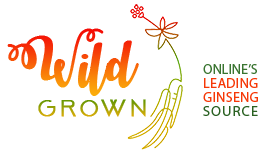• No license is required to harvest wild ginseng no private land in Minnesota.
• A Minnesota dealer’s license is required to buy wild ginseng from harvesters; sell wild ginseng to an unlicensed dealer or to a processor, broker, wholesaler, or retailer; or carry, ship or export wild ginseng out of the state.
• The harvest season for wild ginseng in Minnesota is September 1 to December 31.
• State law requires all harvested plants to have at least 3 prongs with 5 leaflets on each.
• Minnesota requires that seeds of collected wild ginseng plants be planted in the area where the plants were dug immediately after harvest. The law specifies that seeds “must be planted by removing surface litter, planting each seed at a depth of one-half inch in the underlying soil, and replacing the surface litter over the planting site.”
• Harvesting ginseng is allowed by permit on these DNR-administered lands:
Wildlife Management Areas (WMAs). All State of Minnesota WMAs are closed to ginseng harvesting except the Whitewater WMA near Altura. A harvesting permit may be obtained from the Area Wildlife Manager.
State Forest Lands. A Special Product Permit ($25.00 fee, payable by check or money order during office hours) is required which may be obtained at any area Forestry office. Permit allows for a harvest of up to five pounds (dry weight) of ginseng root.
Harvesting ginseng is prohibited on these DNR-administered lands:
State Parks and Trails
Scientific and Natural Areas
• The Minnesota Department of Natural Resources, Natural Heritage Program, Section of Wildlife, serves as the state’s ginseng coordinator. This office can be reached at
(651) 259-5142 or:
500 Lafayette Road
St. Paul, MN 55155
• A permit is required to collect ginseng in Chippewa or Superior National Forests. These can be contacted at (218) 335-8600 or (218) 626-4300, respectively.
Provided by the American Herbal Products Association, in cooperation with U.S. Fish and Wildlife Service and United Plant Savers
Is ginseng an endangered species in the state of Minnesota?
At present, wild ginseng is not technically on the endangered list in Minnesota ... but it very easily could be in the near future.
Ginseng is one of the wild plants covered by a 1973 international treaty for the protection of endangered species. This treaty was ratified by the United States and 45 other nations. It provides that wild ginseng roots may not be exported unless the Endangered Species Scientific Authority determines that continued exports will not threaten the survival of the species.
Each year, Minnesota and other states in which wild ginseng still occurs are required to report the status of the species and their program to conserve it. Based on this information, the Federal Fish and Wildlife Service determines whether to permit export of wild ginseng from those states.
Since then, the Federal Permit office has declared exports from certain states to be illegal. Since nearly all American ginseng is exported, this is almost equivalent to making it illegal to harvest ginseng in those states.
So far, export of the wild ginseng from Minnesota is still permitted ... but the Federal Fish and Wildlife Service is watching the situation closely. It has declared that it will continue to authorize export of wild ginseng only if it is satisfied that the surviving ginseng population in Minnesota is not endangered and the state is taking effective measures to protect the species.
When to collect ginseng in Minnesota
By law, the ginseng harvesting season in Minnesota opens on September 1. It is illegal for collectors to dig, possess or sell green ginseng before that date.
But regardless of date, ginseng should never be harvested until the berries are bright red and mature.
Only mature plants with three or more prongs (branches) should be harvested.
Never dig plants with only 2 prongs or even small 3-pronged plants which do not have berries. These should be left undisturbed until the plants are sufficiently mature to bear seed and until roots reach marketable size. Roots from 2-pronged plants are small, have little value, and are likely to be rejected by dealers.
Where to dig ginseng in Minnesota
Ginseng can be harvested from your own land, from private land belonging to others, or from certain public forests and other wildlife management areas.
If harvesting from land belonging to others, it is important that you first obtain permission from the owner. If you do not, you are guilty of trespassing and the laws and penalties pertaining to trespassing will apply.
No one is permitted to harvest wild ginseng in Minnesota State Parks or other areas under the administration of the Division of Parks and Recreation. Harvesting is also prohibited in state Scientific and Natural Areas. Under certain conditions, digging is allowed in state-owned wildlife management areas if a permit is first obtained from the Area Wildlife Manager. No special permission is required for harvesting wild ginseng in state forests.
How to dig in Minnesota
Care should be taken in digging ginseng. With a simple digging fork or trowel, commence digging about 6 inches from the stem. Remove the soil carefully over a 12-inch diameter circle, digging down until you can see the main root. This is important because the underground stem often proceeds horizontally before it joins the top of the true root.
Continue to loosen the soil to be sure all the main, tail and branch roots are exposed before lifting. Roots broken off and left in the soil represent lost money ... and the highest prices are paid for intact, un-damaged roots.
After digging, brush loose soil from the roots
Sometimes it is impossible to remove the mature plant without disturbing the roots of smaller, immature ginseng plants growing close by. When this occurs, replace the smaller roots and pack soil firmly around them. These will be available for harvest in future years.
Re-seeding for the future
In nature, very few wild ginseng seeds survive to germinate and develop a new generation. But prompt and proper re-seeding by harvesters will increase the chances for germination and help guarantee improved stands and larger yields in future years.
Minnesota regulations require that at time of harvest, all mature seeds must be planted in the same general area in which the parent plant was dug. This is to assure that soil and shade conditions will be favorable for the seedlings.
After digging the roots, squeeze the berries to break the pulp. Most berries will contain 2 or 3 seeds. Plant the individual seeds about 6 to 12 inches apart and one-half inch deep in the soil and cover the area with leaf litter.
It is essential that the planting be done promptly before the berries have time to dry out. Once dry, ginseng seed will not germinate.
Cleaning and drying the roots
After digging, allow the roots to wilt for several days before washing off the remaining soil. Do not scrub or scrape the roots as this may damage their natural color and characteristic circular rings. A little soil left on the roots helps highlight the natural rings around the root and may even enhance the value.
Cleaned roots should be dried slowly by natural air. Roots should be placed on a screen or rack outdoors in the shade or on shelves in a well-ventilated attic. Temperatures between 75° and 90° are considered ideal. Turn the roots occasionally to make sure they dry evenly and don’t mold.
Drying time varies with root size and air conditions; large roots may require 3 or more weeks while small roots often need less than a week. 1 takes about 3 ½ pounds of freshly dug green roots to make one pound of dry roots.
Do not dry in an oven because high temperatures dry the roots too rapidly and scorching will make them worthless.
Once dry, roots should be stored in a cool, dry place where they can be protected from rodents until sold.

